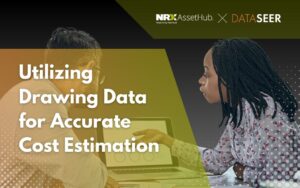In our previous blog, we explored the significant challenges organizations face when migrating Bills of Materials (BOMs) to a new Enterprise Asset Management (EAM) system. Now, let’s dive into how AI-powered tools can help solve these challenges, ensuring BOM data is accurate, standardized, and optimized for operational success.

1. Automated Data Cleansing
One of the most time-consuming aspects of BOM migration is cleaning up inaccurate or redundant data. AI algorithms simplify this process by:
- Detecting and merging duplicate records to remove redundancy.
- Correcting errors in part specifications and filling in missing details.
- Standardizing data formats to ensure compatibility with the new EAM system.
By automating data cleansing, organizations save significant time while ensuring their BOM data is accurate and reliable. This lays the groundwork for smooth migration and efficient operations.
2. Enforcing Standardization
BOM data often varies across facilities, departments, or systems. AI-driven tools address this issue by enforcing consistent structures and naming conventions. Standardization creates a strong foundation for:
- Seamless integration into the new EAM platform.
- Simplified maintenance planning and inventory management.
- Improved reporting and decision-making capabilities.
With uniform BOMs, teams can work more effectively, reducing confusion and errors.
3. Intelligent Parts Mapping
Outdated or incomplete parts data is a common challenge during migration. AI tools analyze historical usage and maintenance records to:
- Identify replacements for obsolete components.
- Fill in missing BOM details with accurate, context-specific information.
- Optimize BOMs to reflect current asset needs and operational priorities.
This intelligent mapping ensures BOM data remains relevant, actionable, and up-to-date, enabling organizations to avoid errors caused by outdated parts.
4. Real-Time Validation
Ensuring the accuracy of BOM data is essential during migration. AI tools validate this data against real-time sources, such as:
- Supplier catalogs to confirm part specifications.
- Maintenance logs to ensure operational consistency.
- IoT systems or historical trends to align with performance data.
By flagging inconsistencies or anomalies, AI guarantees that only high-quality BOM data enters the new system. This reduces errors, minimizes delays, and ensures the new platform functions seamlessly.
5. Predictive Insights for Inventory Optimization
AI doesn’t stop at migration. Its predictive analytics offer valuable insights into part usage and inventory trends. This enables organizations to:
- Optimize inventory levels to reduce excess carrying costs.
- Forecast part demand for preventive and corrective maintenance.
- Minimize stockouts and overstocking through data-driven planning.
With these insights, organizations can strike the right balance between availability and cost efficiency. This proactive approach improves overall maintenance and inventory management.

Building a Foundation for Operational Excellence
Migrating BOMs to a modern EAM system is about more than just transferring data. It’s an opportunity to improve processes, enhance data quality, and achieve better operational outcomes. AI-powered tools play a critical role in:
- Automating manual tasks, saving time, and reducing human errors.
- Standardizing BOM structures to ensure data consistency and usability.
- Delivering real-time validation and predictive insights to optimize maintenance and inventory strategies.
By addressing the challenges of BOM migration with AI, organizations create a solid foundation for smarter, more efficient operations. The result? Enhanced accuracy, optimized workflows, and maximum value from their EAM investments.

Conclusion
AI-powered tools are revolutionizing BOM management, transforming a complex migration process into a streamlined, efficient workflow. By automating cleansing, enforcing standardization, and providing real-time validation, AI ensures that BOM data is accurate, structured, and ready for the demands of modern EAM systems.
For organizations, this is more than just a technology upgrade. It’s an opportunity to build a stronger foundation for operational excellence, reduce costs, and set the stage for long-term success.
HubHead and DataSeer’s AI Service combines human-level understanding with machine speed to build a scalable knowledge data store of engineering designs. By integrating these solutions with your existing EAM/CMMS systems and creating a digital twin, you can enhance decision-making and streamline your maintenance processes. Contact us for a free demo or book a call.
Utilizing Drawing Data for Accurate Cost Estimation

The Challenges of Table Data Extraction

The Tedious Nature of Creating Piping Lists Manually

Share this article

